Farinata or socca is an easy recipe made by mixing chickpea flour and extra virgin olive oil, then baking it in the oven for about 20 minutes.
It’s the perfect appetizer and snack and accommodates most diets as it’s gluten–free and vegan. So let’s see how to make it!
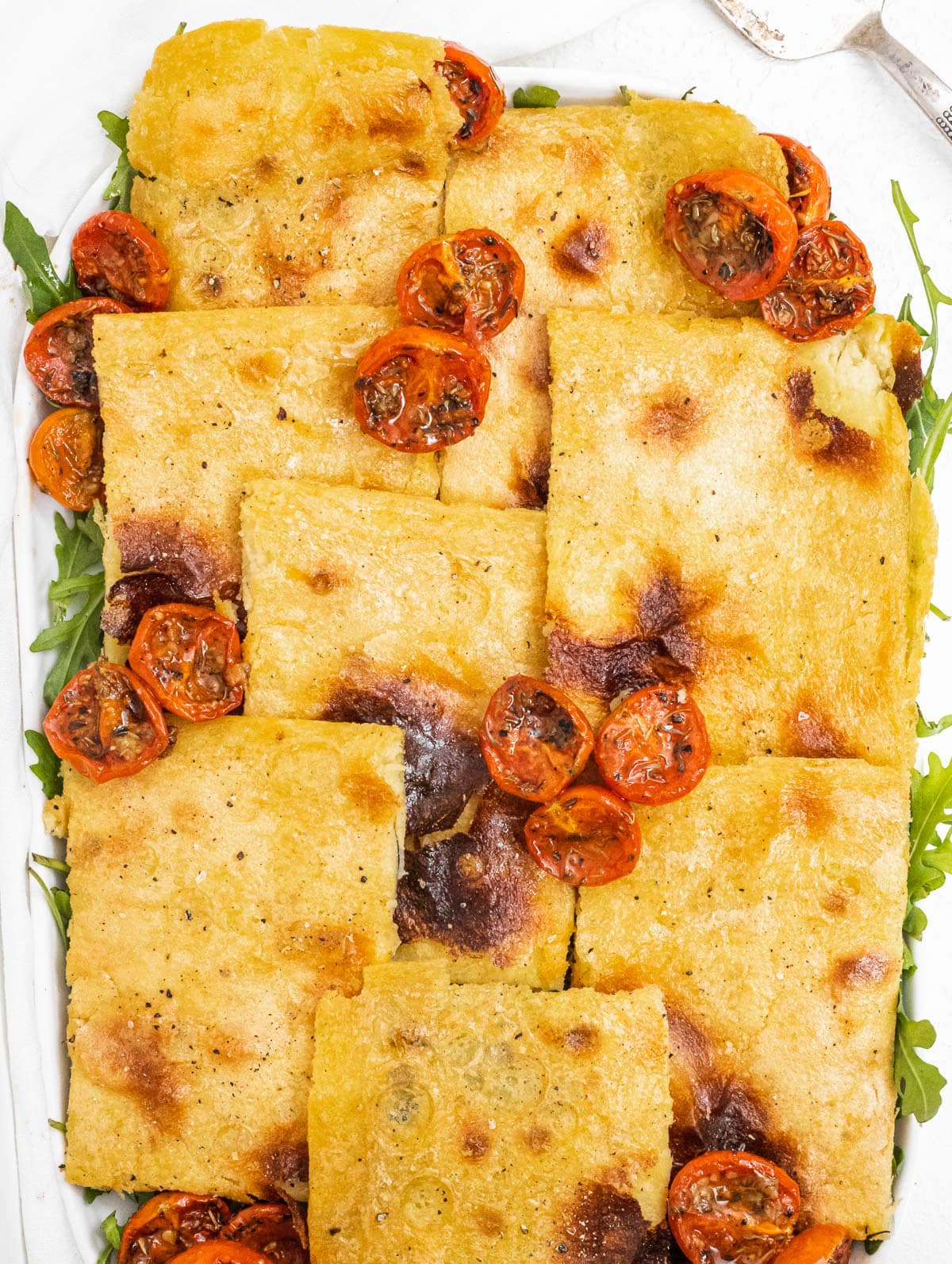
Table of Contents
Check out our best appetizer recipe collection!
Farinata is a chickpea flatbread recipe known as “socca” in the southeastern part of France and “fainè” in Sardinia.
It’s commonly served as a street food in the northwestern regions of Italy, and one of the easiest ways to cook with chickpea flour.
According to the legend, farinata was made for the first time in 1284, when the city of Genoa defeated Pisa in the battle of Meloria.
The Genoese galleys, loaded with prisoners, found themselves in a bad storm with big waves.
In the turmoil of the storm, some barrels of oil and sacks of chickpeas spill and soak quickly in saltwater.
Since food was scarce, the sailors were given bowls of pureed chickpeas and olive oil. However, some sailors refused to eat it, leaving the chickpea mash in the sun.
After a few hours, the sun dried the chickpea and oil mixture into a flat pancake.
The next day, driven by hunger, the sailors ate the chickpea pancake and were surprised by its deliciousness.
Months after returning from the sea, the Genoese improved the recipe and began cooking the chickpea puree in the oven.
The meal was an instant success in town, and to mock the defeated city of Pisa, farinata was called “Gold of Pisa“
From there, the dish spreads to Tuscany, where it’s called cecina, and to the French Riviera, where it is called socca.
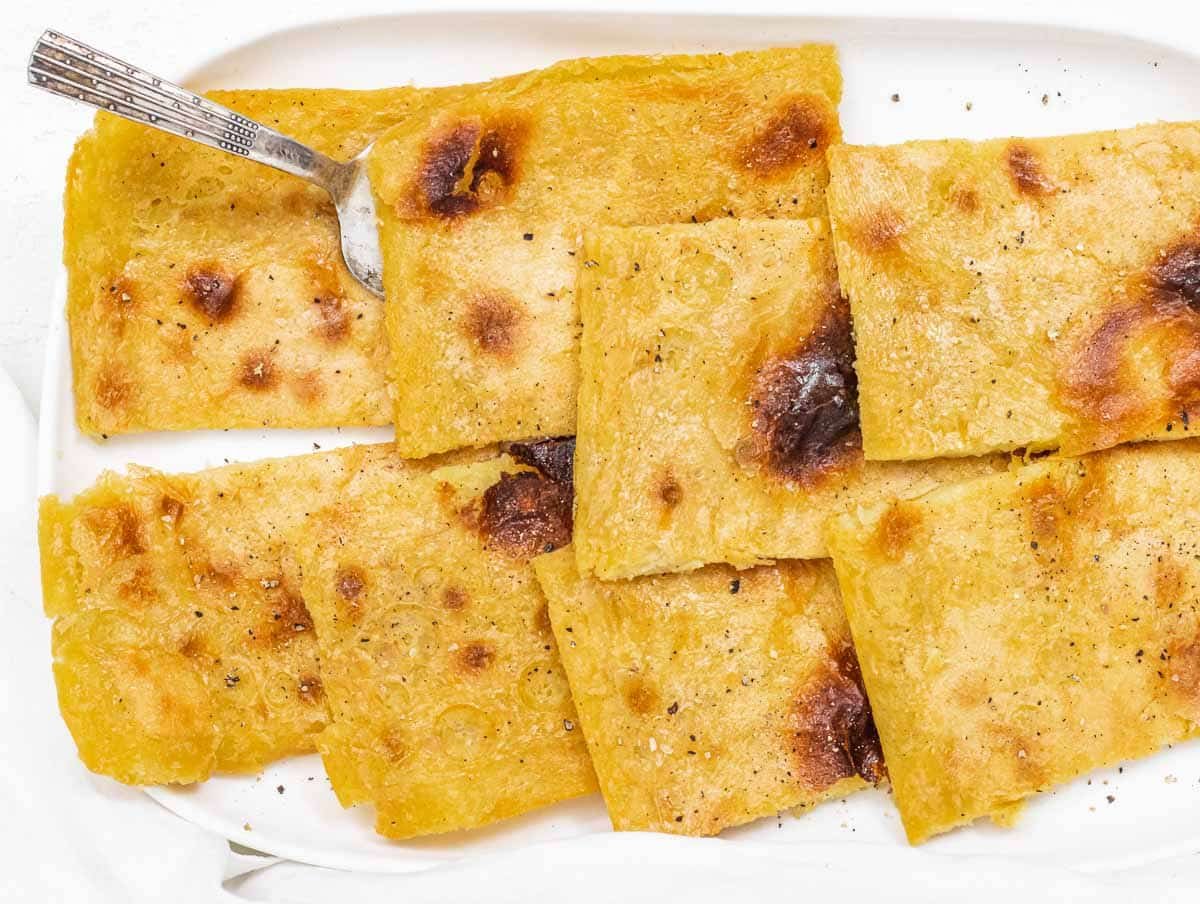
Ingredients
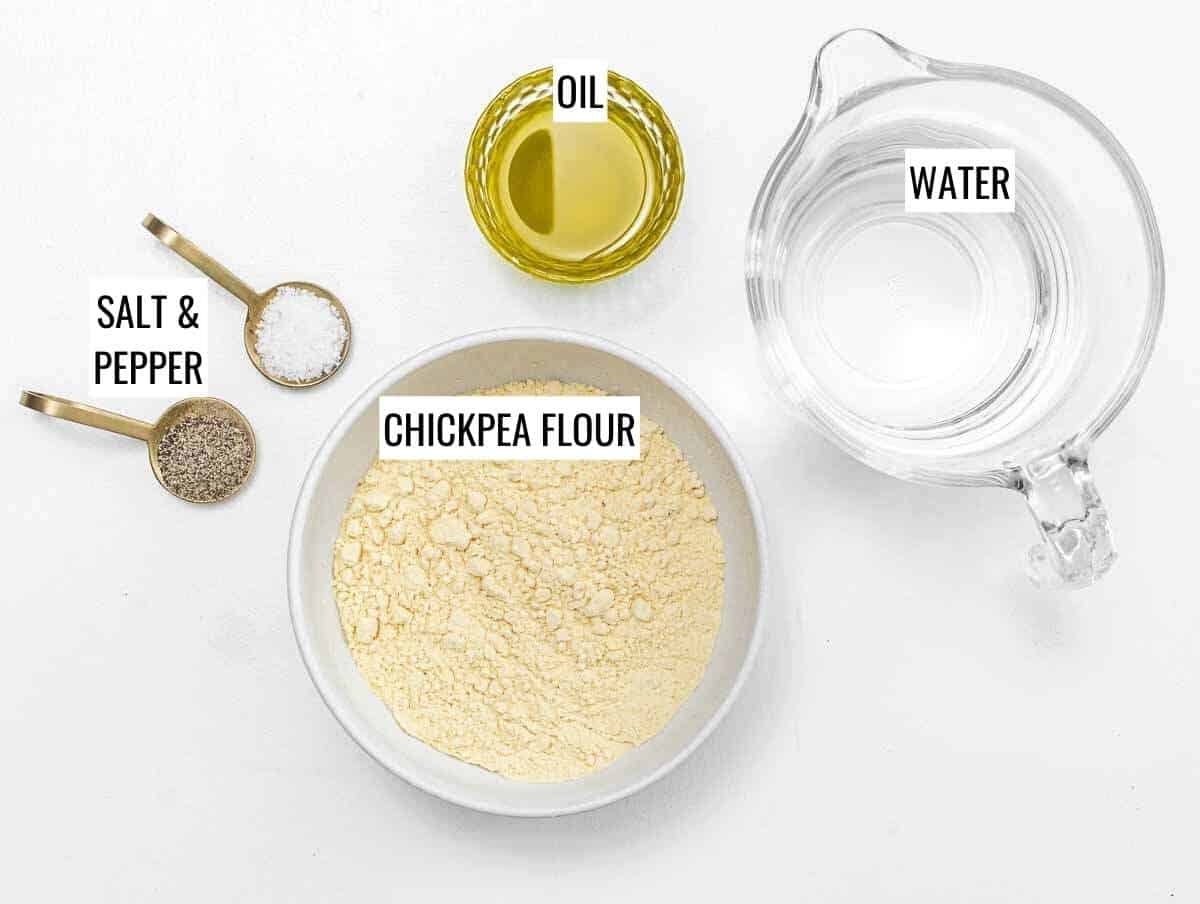
Chickpea flour
Also known as garbanzo bean flour or “gram flour,” and is the main ingredient for the socca batter. You can’t replace it with regular wheat flour.
We tried replacing it with fava bean flour and red lentil flour, which worked quite well.
Extra virgin olive oil
We recommend using extra virgin olive oil because it has a richer, more aromatic flavor that goes well with the chickpea flavor.
Of course, you can replace it with regular olive oil, but the flavor won’t be as rich and aromatic.
Water
Tap water is perfectly fine.
Salt and pepper
As per tradition, we add salt to the batter while grinding black pepper on top of the farinata before serving it.
Fresh herbs
After cooking, sprinkle your farinata with freshly chopped parsley or rosemary.
Equipment
I recommend blending the chickpea batter with a blender (immersion or regular). This way, you don’t have let the batter rest for hours for the flour to hydrate.
Don’t have a blender? You can easily use a whisk or a fork, but make sure to dissolve the flour in the water entirely.
We made this socca recipe in a quarter sheet pan (9 x 13 inches) and a round baking pan (11 inches or 28cm in diameter). Alternatively, you can use a cast iron pan.
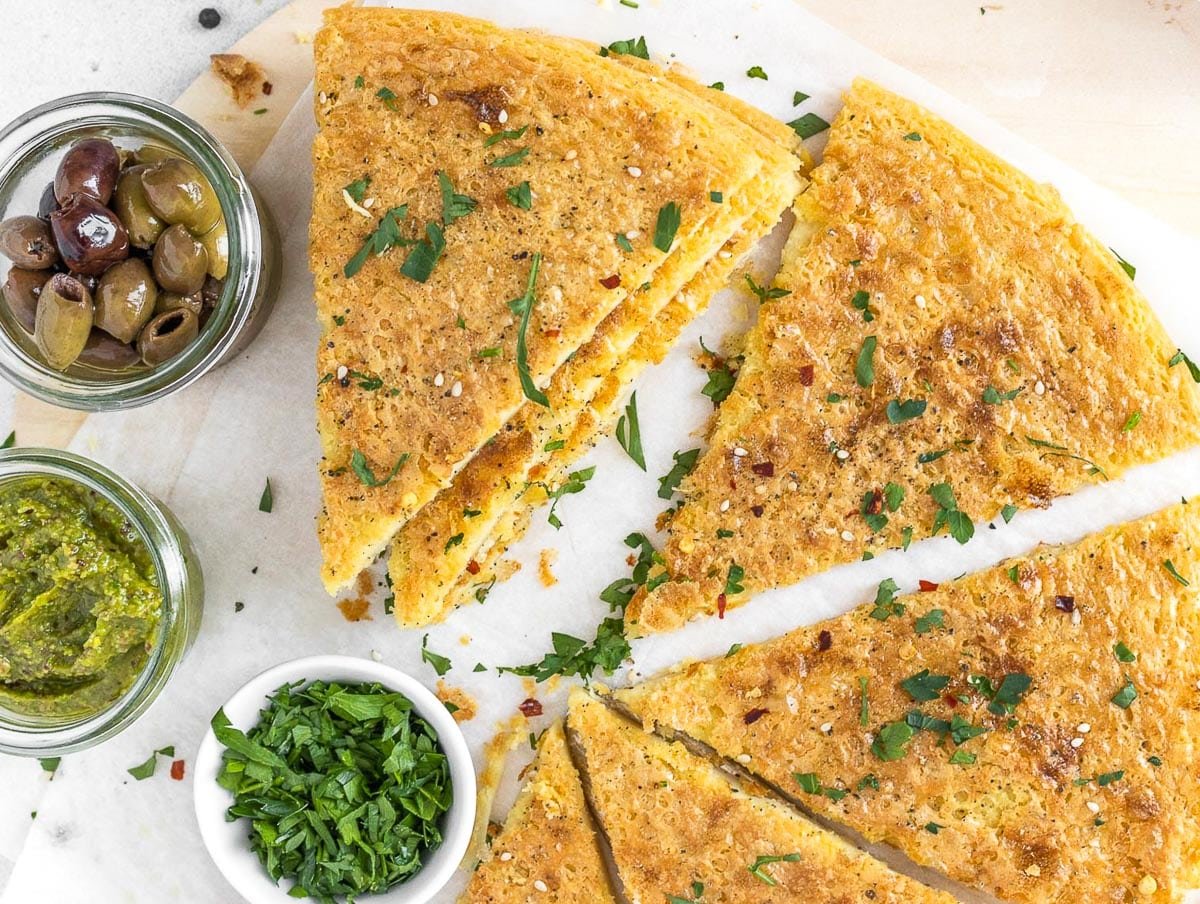
Instructions
1. Make the batter
Preheat the oven to 480°F or 250°C. Add chickpea flour, salt, and water to a bowl and blend with an immersion blender for 3 to 5 minutes till completely smooth. You can also use a regular blender.
If you don’t have a blender, you can use a whisk or a fork, but make sure that the flour is fully dissolved in the water, and ideally, let it sit for an hour.
Note: some people add oil to the batter, but this is not strictly necessary since we will add quite a bit of oil to the baking tray later.
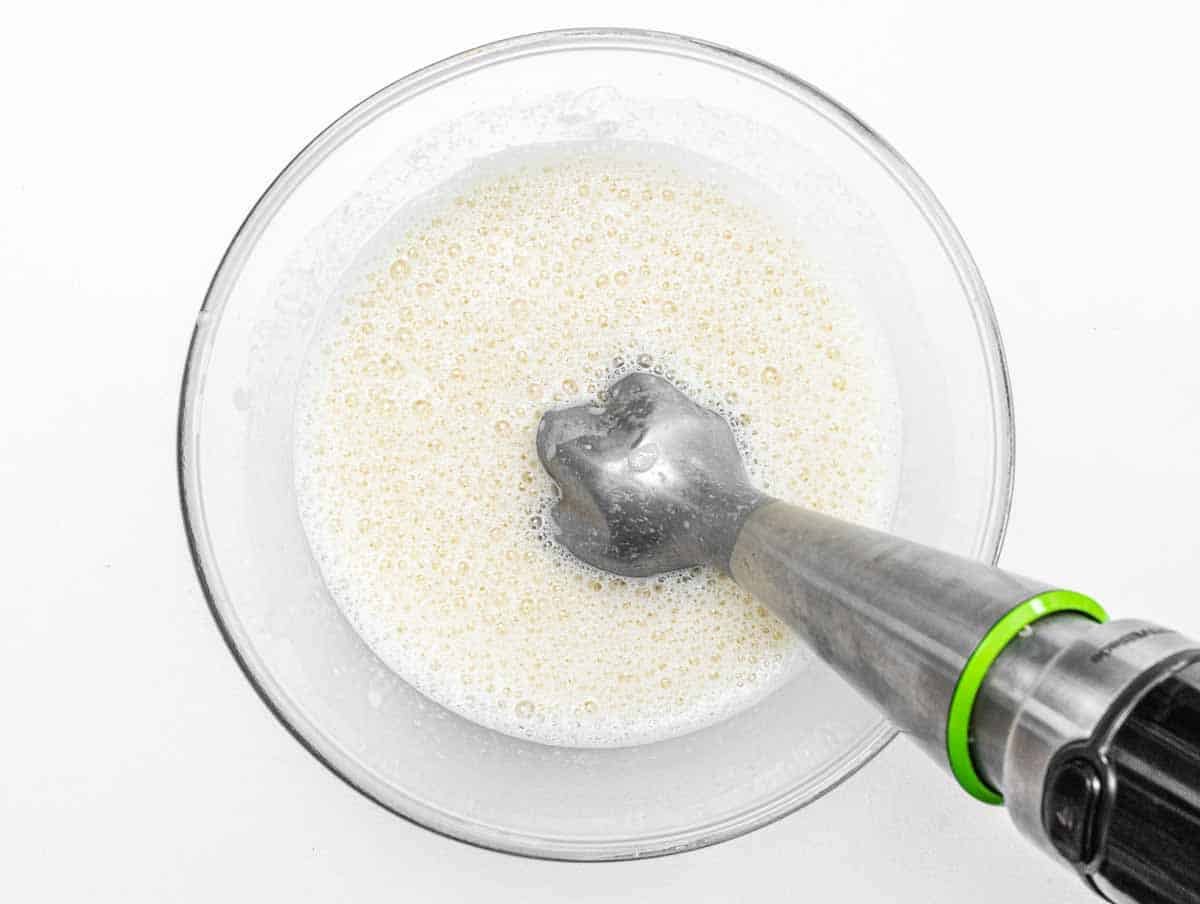
With a spoon, remove some foam from the chickpea batter’s top. We do this because the foam tends to burn in the oven.
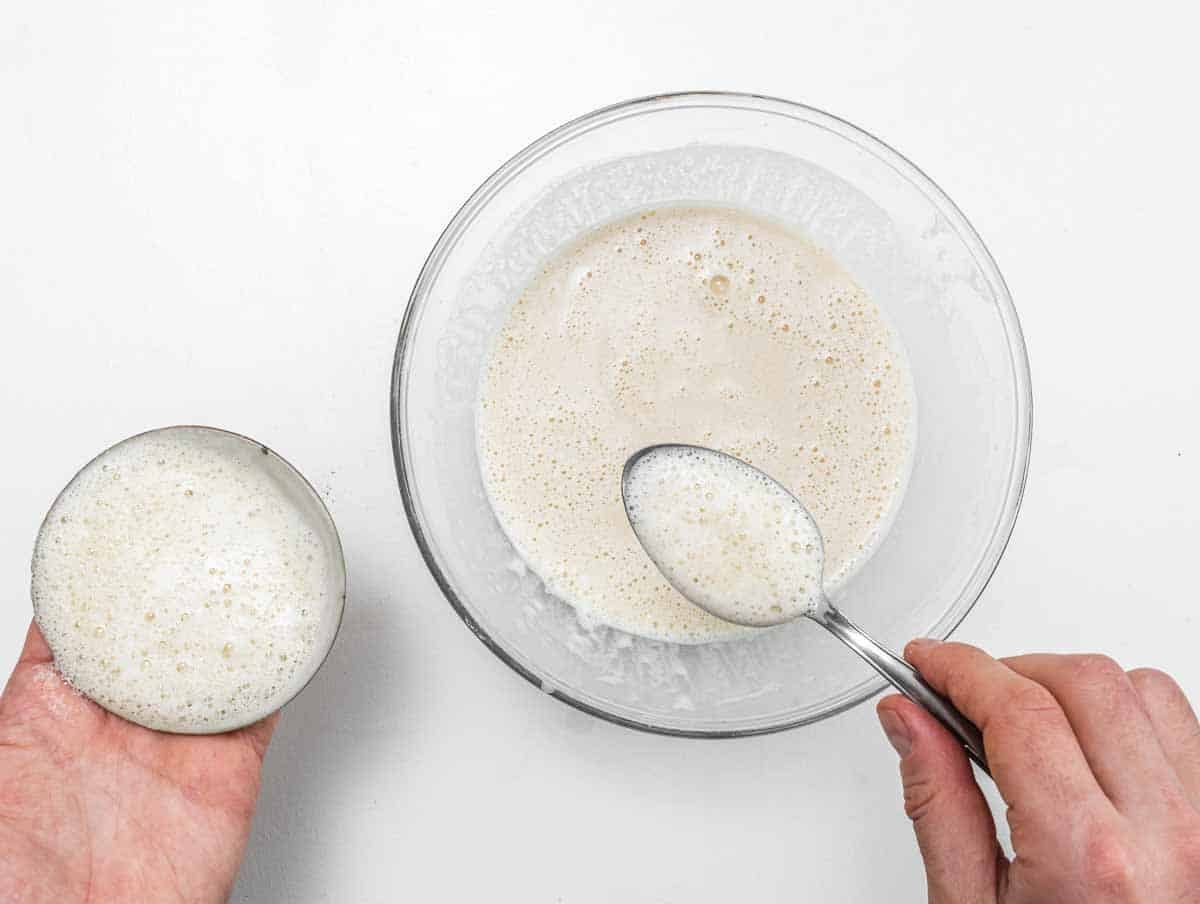
2. Transfer onto a baking tray
Add the olive oil to the baking pan or cast-iron skillet and distribute it evenly.
There should be enough olive oil to cover the tray’s bottom fully. It is a crucial step, or your farinata will stick to the tray.
If you don’t want to use oil, line your baking pan with parchment paper. In this case, we recommend adding some oil to the batter.
Tip: tilt the tray, and you should see a small “wave” that the olive oil creates while it runs from one side of the tray to the other.
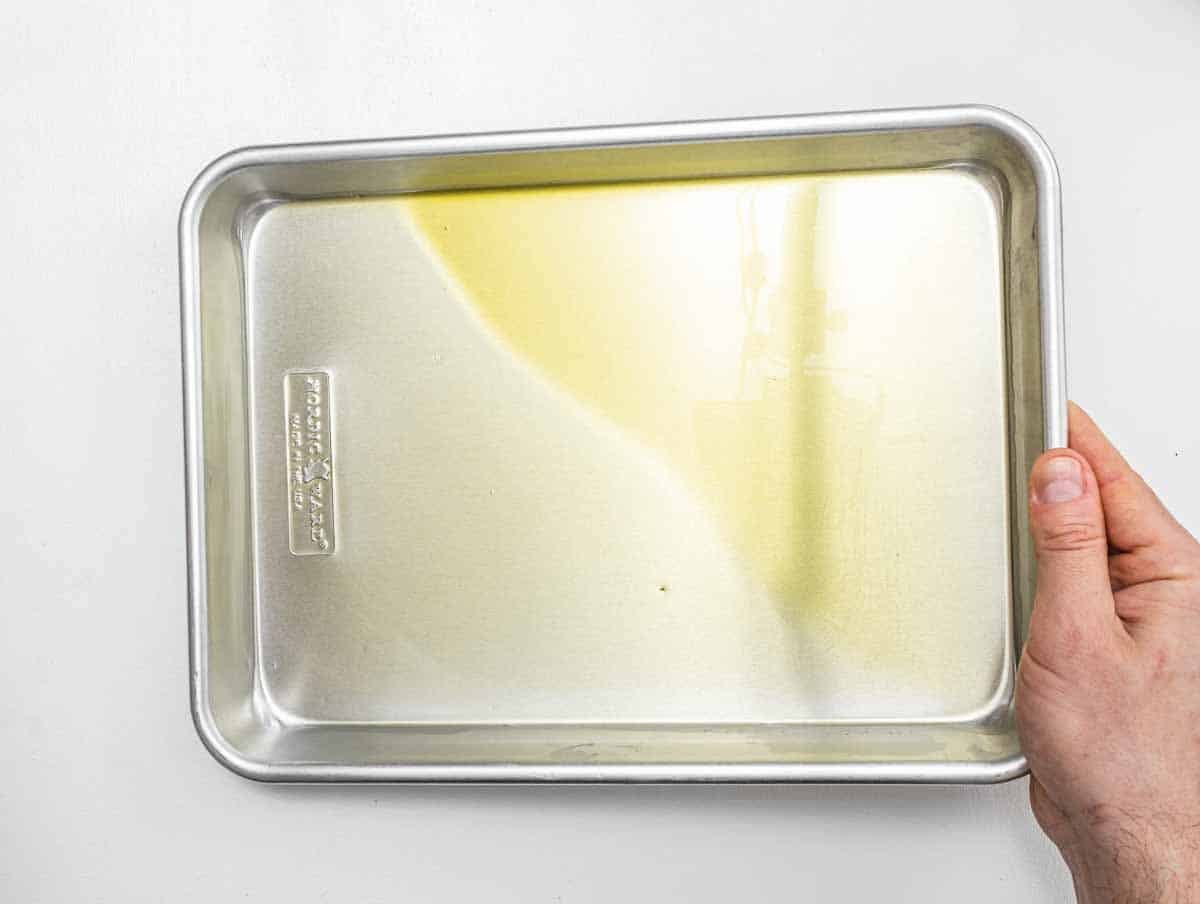
Now, gently pour the chickpea batter into the center of the baking tray, but over a spoon first, and do not pour directly into the tray.
Pouring directly from the bowl and into the baking tray will displace the oil, and your socca will stick.
The batter is about 1/4 of an inch or 0.6 mm thick.
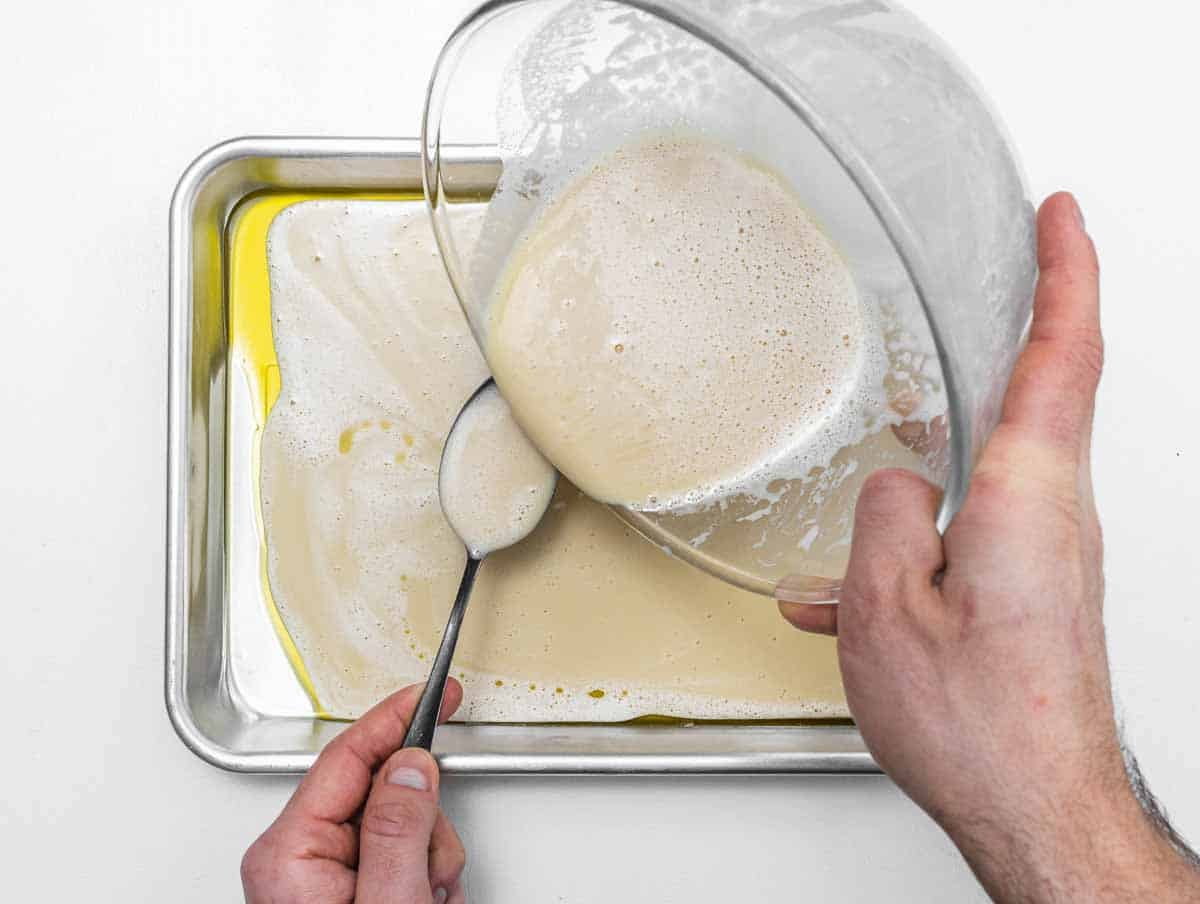
You should see some oil on top of the chickpea batter. It is perfectly normal.
You can distribute the oil by moving it around gently with the back of a spoon.
But don’t let the back of the spoon touch the bottom of the baking tray. Instead, glide gently on the surface of the batter.
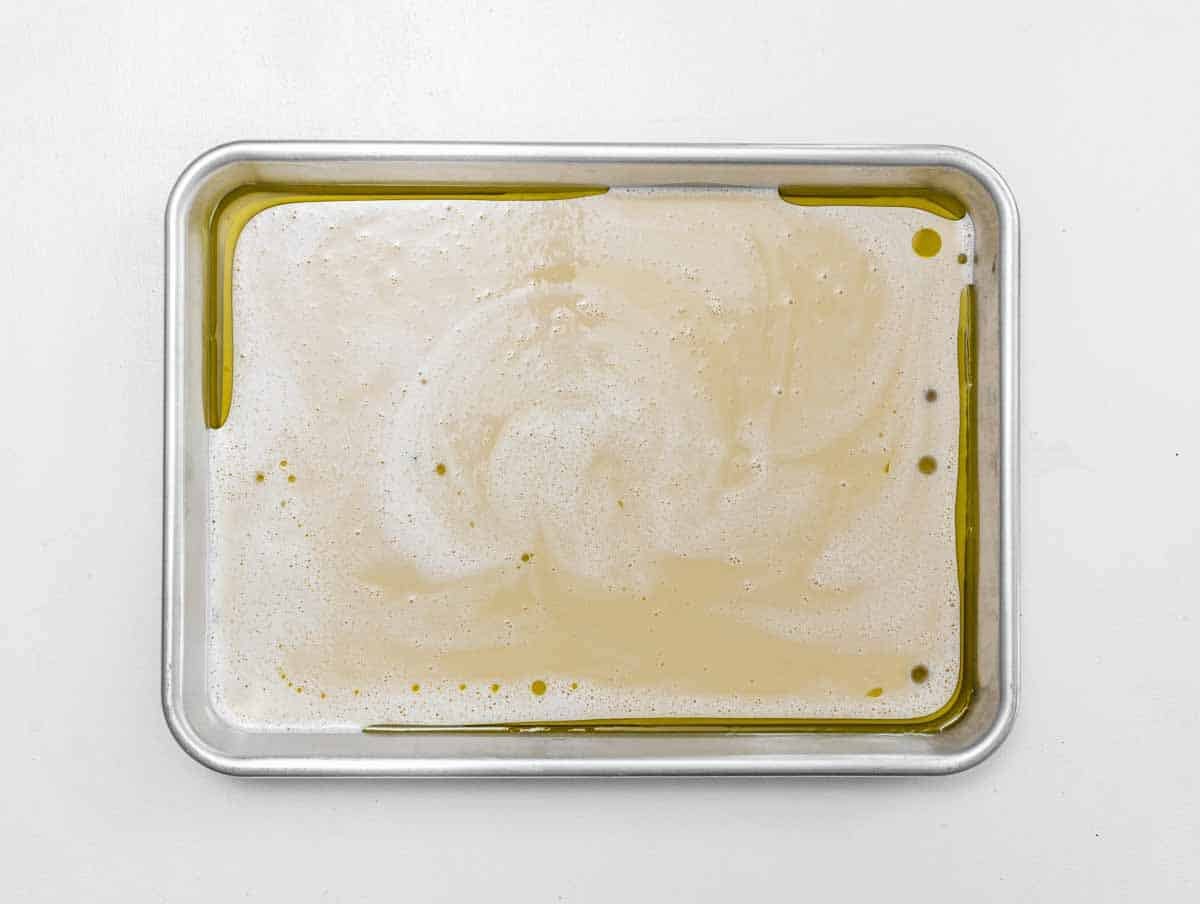
3. Bake farinata
Bake in the oven at 480°F or 250°C for 10 minutes, then set your oven to broiler mode and broil the farinata for another 8 to 10 minutes, keeping an eye on it so that it doesn’t burn.
It should be well cooked, golden and crispy on top, and soft and smooth on the bottom.
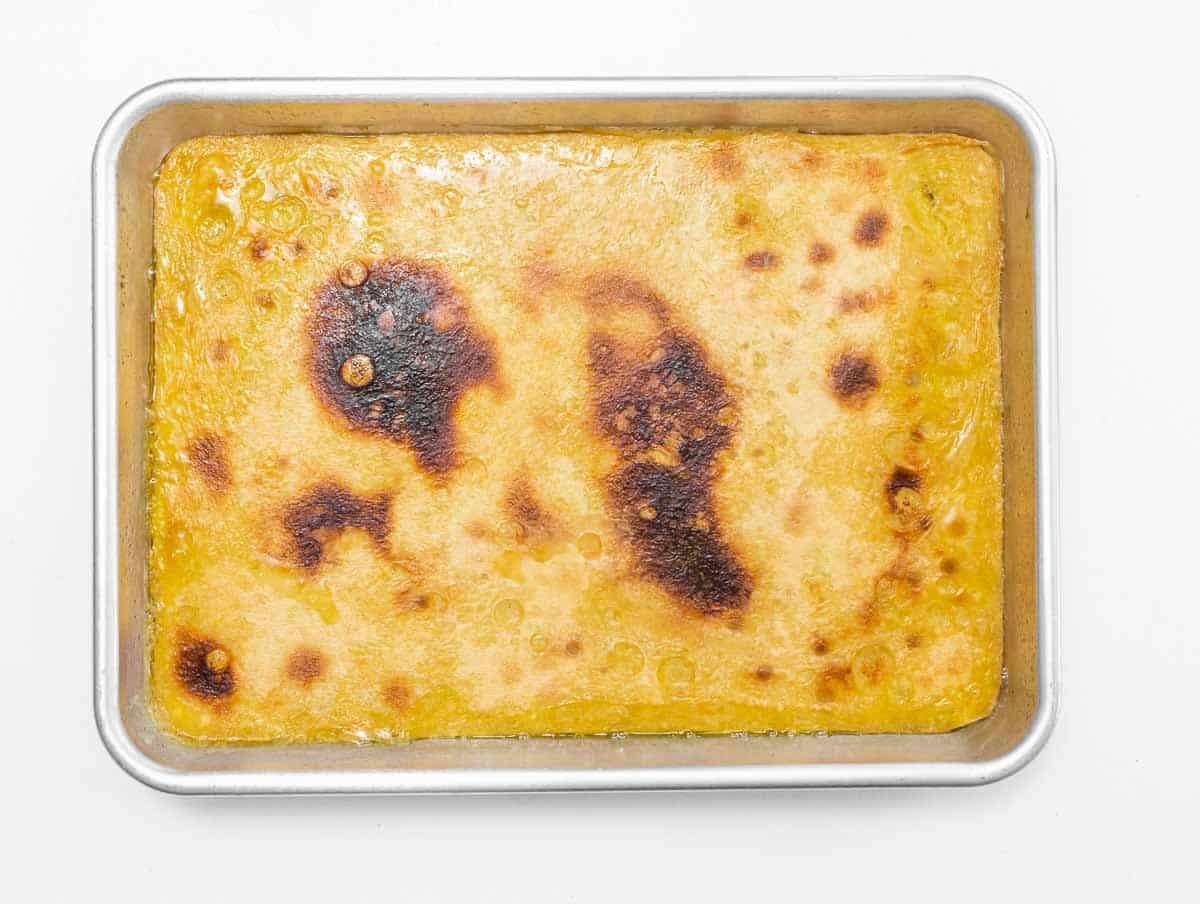
Take it out of the oven, and remove it from the pan with the help of a spatula. The farinata will stick to the pan a bit; that’s normal.

Before serving, sprinkle with salt, freshly ground black pepper, and fresh rosemary. Enjoy while still hot.
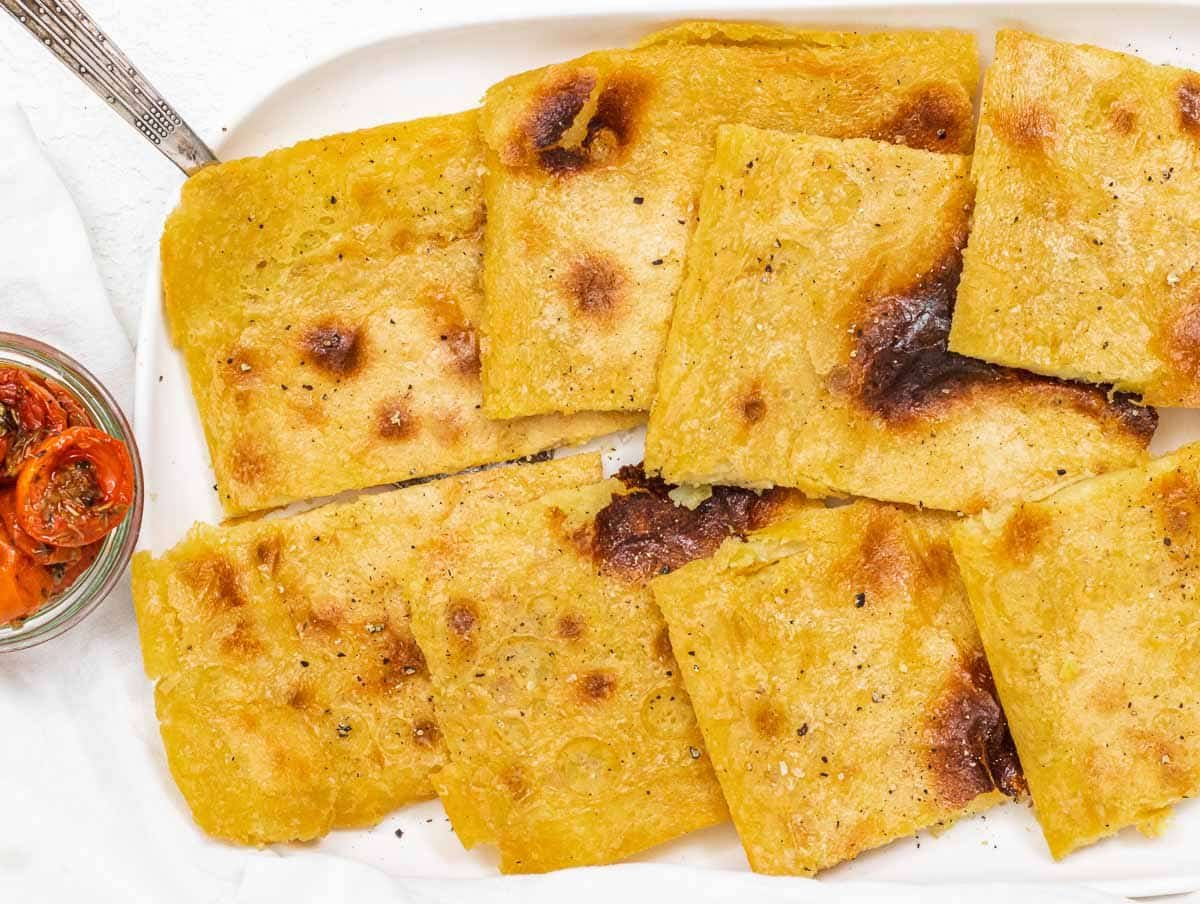
Serving Suggestions
Farinata is best eaten hot, straight out of the oven.
The traditional way of eating it is simple, with a sprinkle of salt and a couple of twists of freshly ground black pepper.
You can also eat it in two slices of bread or focaccia. We like to have it:
As a starter
Serve it on a bed of arugula with olives, basil pesto, olive tapenade, hummus, avocado spread, grilled vegetables, or even better, with our eggplant caponata, caramelized onions, or confit tomatoes.
Think of it as a pizza crust, and add toppings to it!
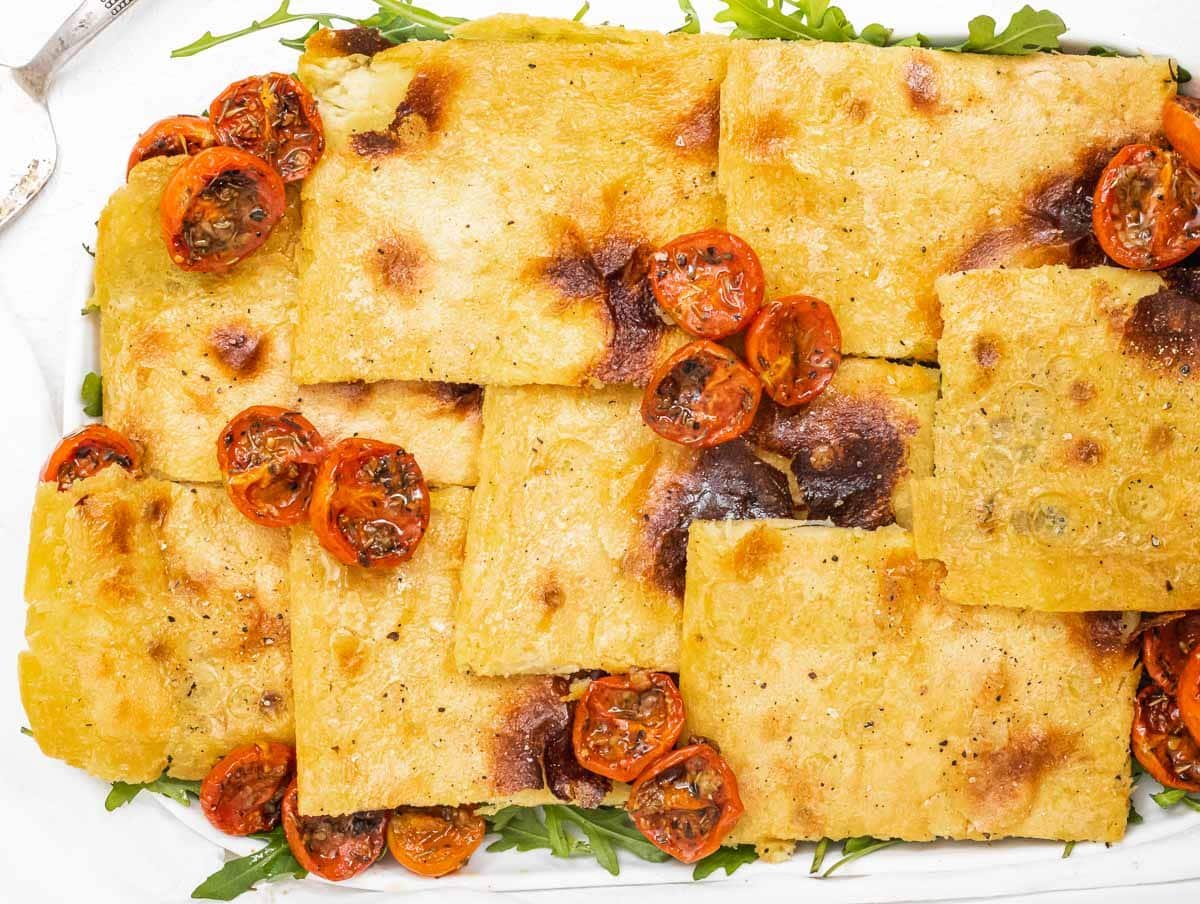
For dinner
Pair it with various vegetables for a buffet-style dinner. Serve with seasonal roasted veggies, roasted Brussels sprouts, roasted bell pepper, roasted broccoli, or artichokes.
You can add Middle-Eastern and Mediterranean dishes like a fresh Shirazi salad, tabbouleh, Greek tzatziki, Italian sautéed eggplant, or Moroccan Zaalouk.
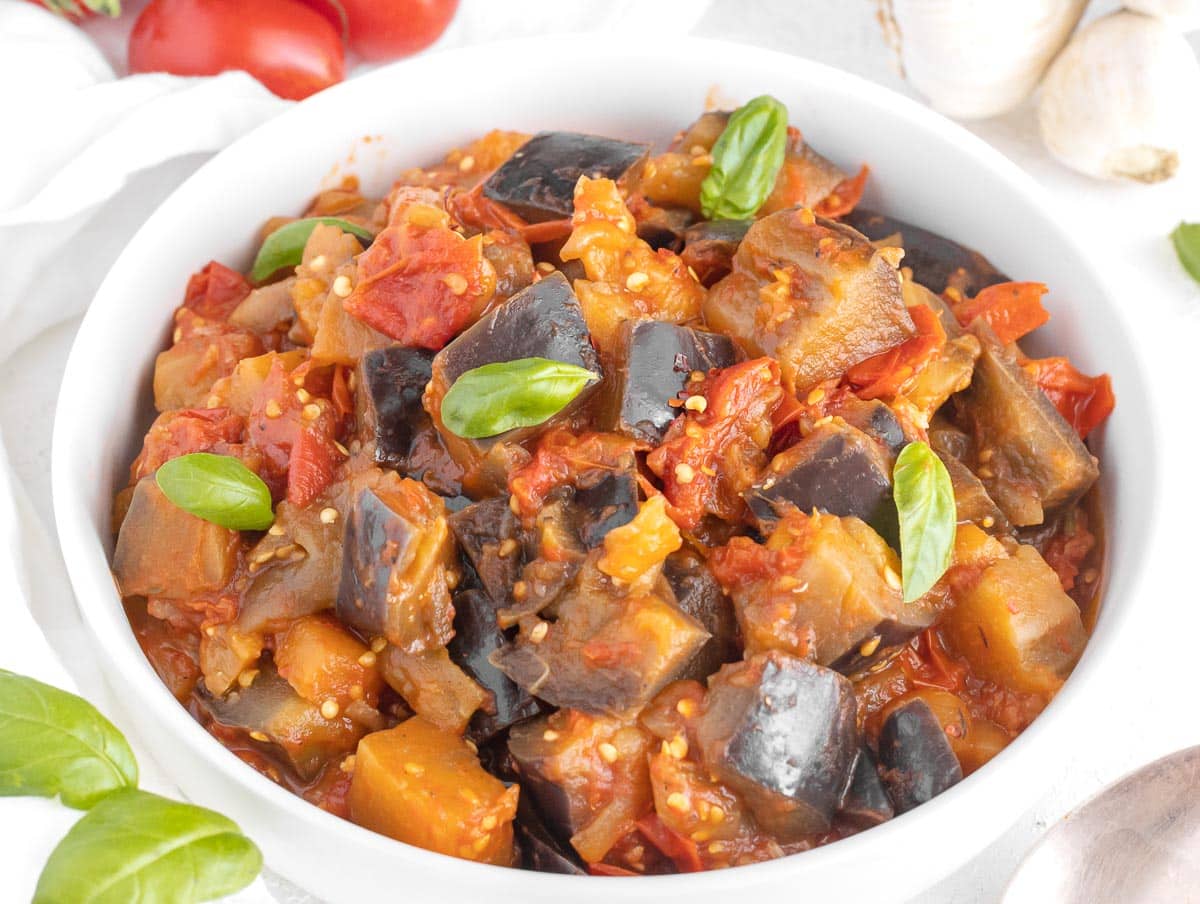
Variations
Inspired by this recipe, we created two main variations of farinata:
Zucchini pie without egg: an onion and zucchini filling made with chickpea flour and coated by a thin layer of dough.
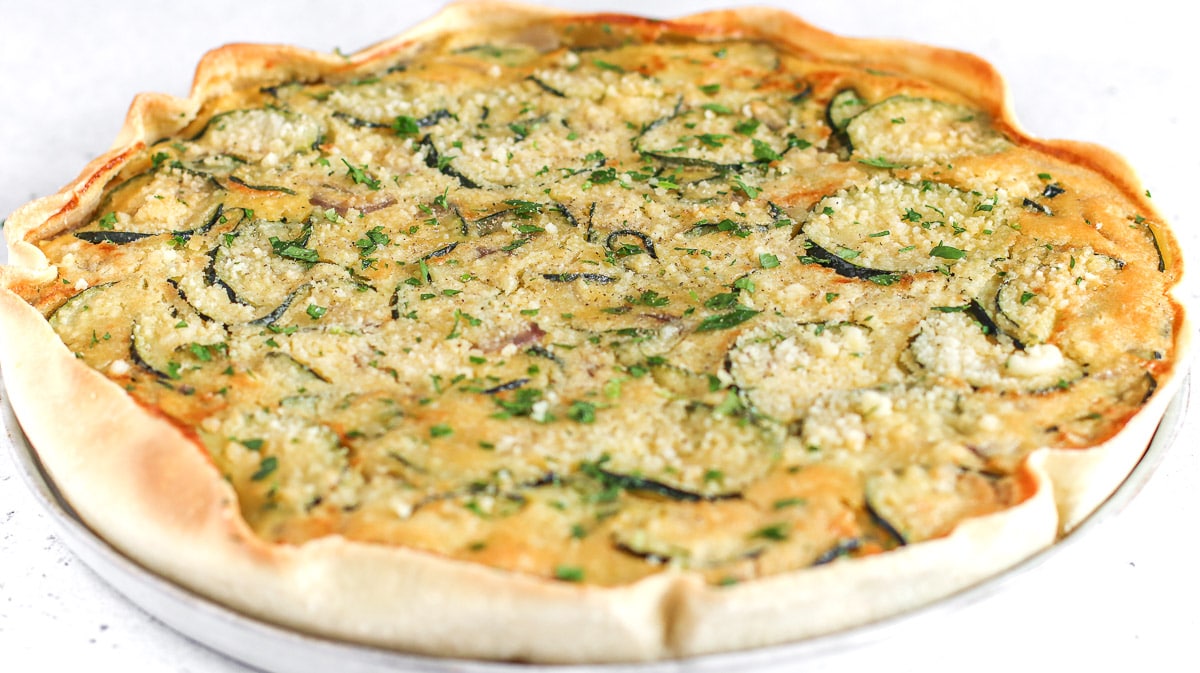
Frittata without eggs: crisp on the outside, soft and moist on the inside, this eggless frittata made with chickpea flour is easy, nutritious, and delicious.
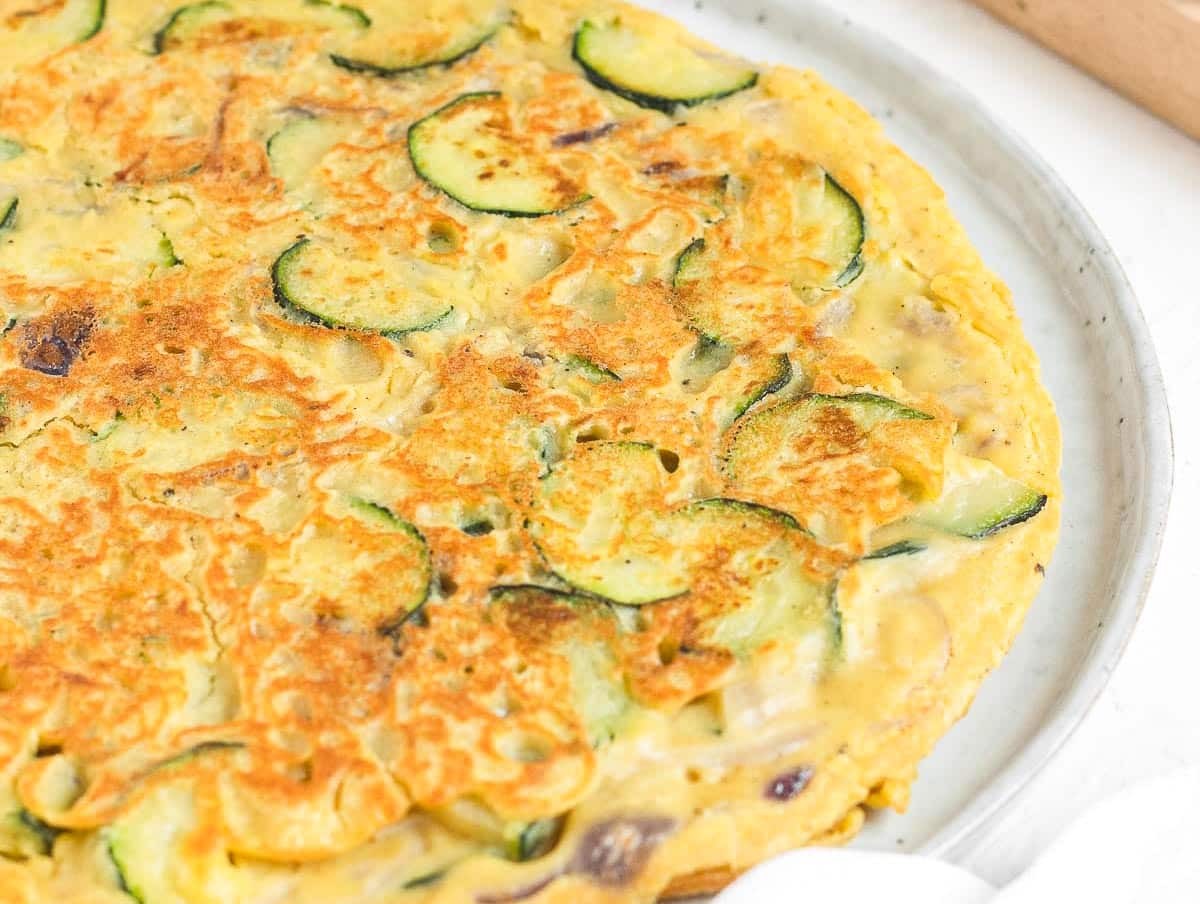
Tips
- Use a blender: blending the chickpea batter will allow you to cook it immediately without letting it rest for several hours to hydrate.
- Pour over a spoon: don’t pour directly into the baking tray, but over a spoon first to not displace the oil on the tray. This way, your farinata won’t stick.
- Remove some of the foam that forms on top of the chickpea batter. It tends to burn in the oven.
Questions
They are the same thing. The farinata is the original dish (called Pisan Gold in the past) that originated in Genoa (Italy).
The same dish became popular across what is now called the French Riviera (Provence), up to Nice. Back then, however, Nice was not part of France.
From the 7th century, Nice was part of the Genoese league (Genoa was a strong maritime republic) and later was part of the Duchy of Savoy till 1860, where Italian was spoken as the primary language.
It’s easy to imagine that the close relations of Nice with what is now modern Italy contributed to some spillovers of recipes and culinary traditions.
Make Ahead and Storage
Make ahead: we recommend cooking the farinata shortly before serving it; however, you can prepare the batter in advance, up to 24 hours before you bake it. Keep the batter in the fridge in a bowl covered with plastic.
Refrigerator: store leftovers wrapped in plastic or in an airtight container in the fridge for up to 4 days.
Freezer: let the socca cool down completely, transfer it to a freezer-friendly container, and freeze for up to 3 months.
Reheat: warm the farinata in the microwave or the air fryer.
More Chickpea Flour Recipes
If you’re new to cooking with chickpea flour, get fresh inspiration with these easy recipes:
- Chickpea crepes (chickpea flour, olive oil, water, mushrooms, etc.)
- Savory frittata muffins (chickpea flour, olive oil, nutritional yeast, curry powder, etc.)
- Potato frittata (chickpea flour, potatoes, turmeric, cumin, olive oil, etc.)
- Fried eggplant (chickpea flour, eggplant, bread crumbs, grated parmesan, marinara sauce, etc.)
For many more starter ideas, check out our starters category page.
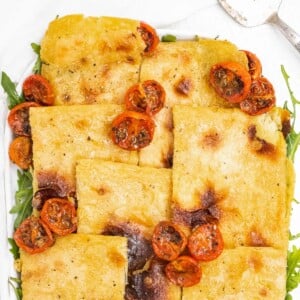
Farinata (Socca)
Video
Equipment
- Immersion blender
- Quarter sheet pan (9×13 inches – 22 x 33cm) or round baking pan (11 inches or 28 cm)
Ingredients
- 1 cup chickpea flour or garbanzo bean flour
- 1½ cups water
- 1 teaspoon salt
- 2 twists black pepper
- 3 tablespoons extra virgin olive oil
Instructions
- Preheat oven to 480°F or 250°C. Add chickpea flour, salt, and water to a bowl and blend with an immersion blender for 3 minutes till completely smooth. You can also use a regular blender.
- With a spoon, remove some of the foam from the top of the chickpea batter.
- Add olive oil to the baking sheet.You could use baking paper instead of oil on the baking sheet, but in that case, you'd have to add the oil to the batter.
- Gently pour the chickpea batter into the center of the tray, but first over a spoon and do not pour directly into the pan.
- Bake at 480°F (250°C) for 10 minutes, then set your oven to broiler and broil the farinata for another 8-10 minutes. It should be well cooked, golden and crispy on top, and soft and smooth on the bottom.
- Remove from oven, cut it, sprinkle it with salt, freshly ground black pepper, and serve.Farinata is best eaten hot, right out of the oven.
Notes
Nutrition
If you liked this Italian farinata, you might also like:
Collections
45 Vegetable Side Dishes
Collections
65 Plant-Based Italian Recipes
Collections
30 Vegan Appetizers
Collections

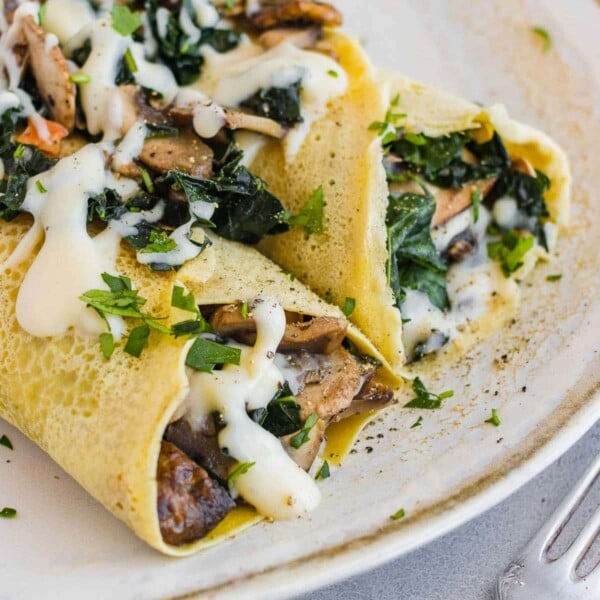
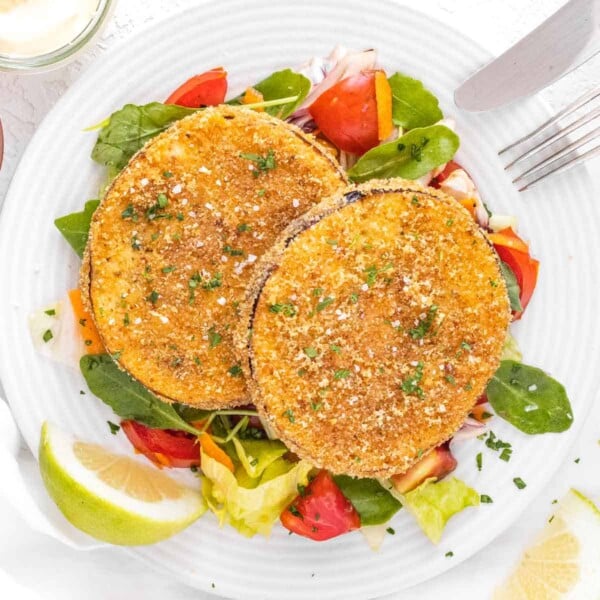
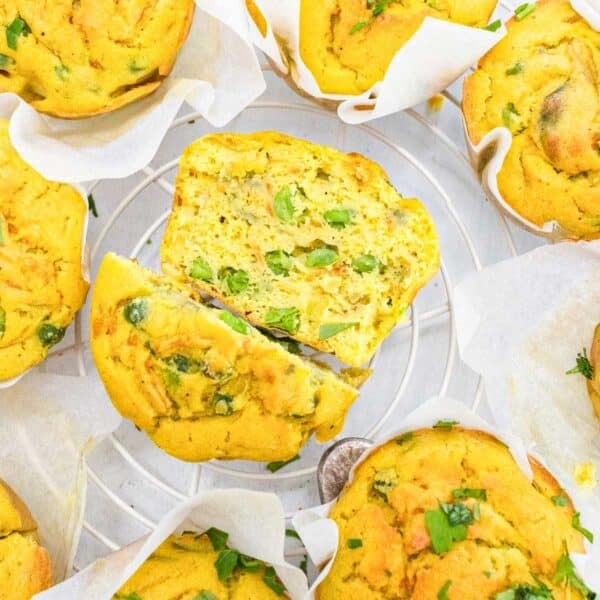
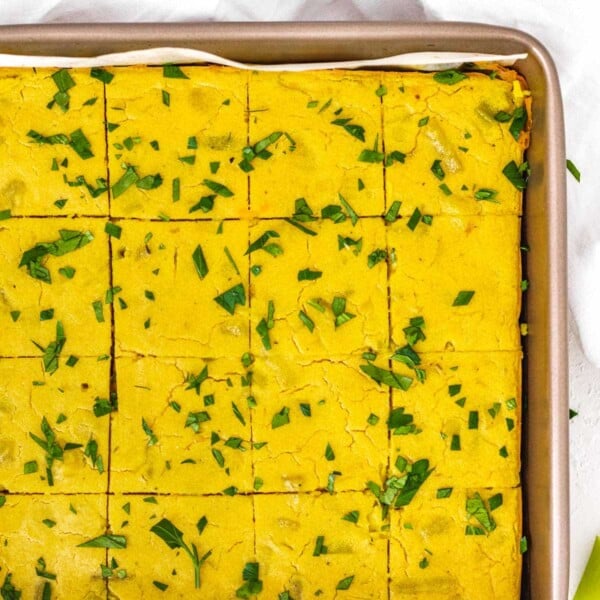
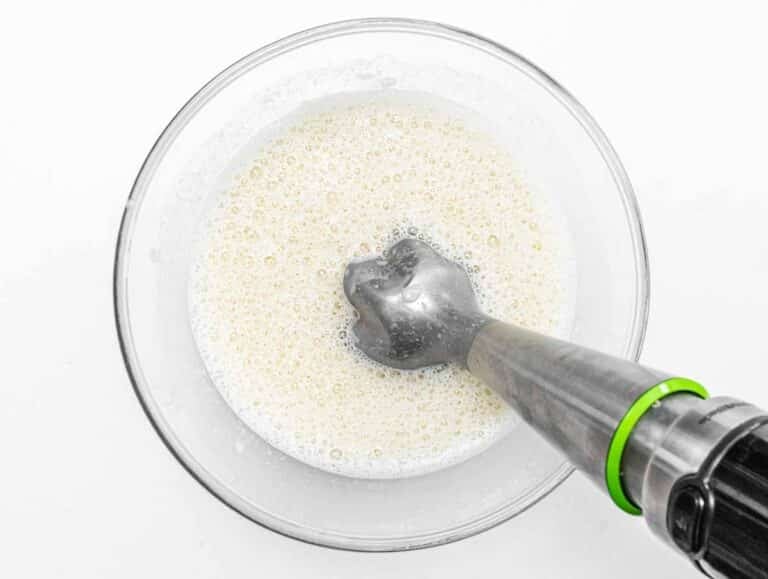
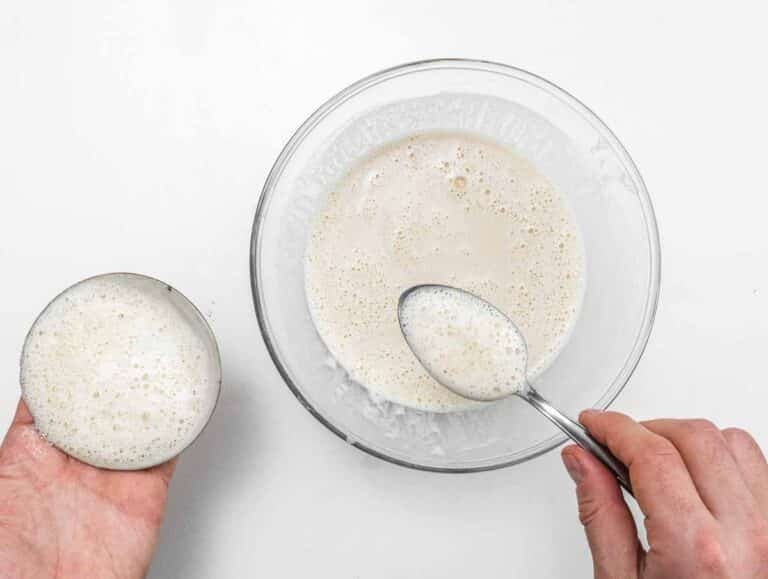
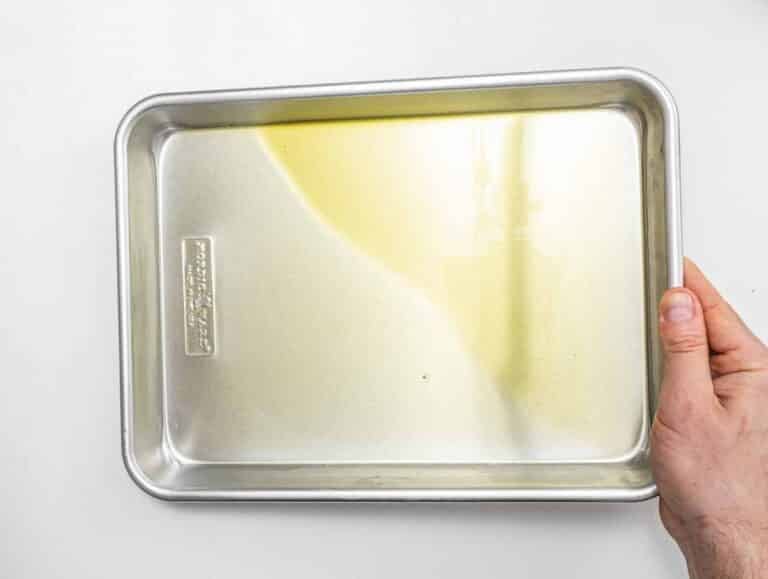
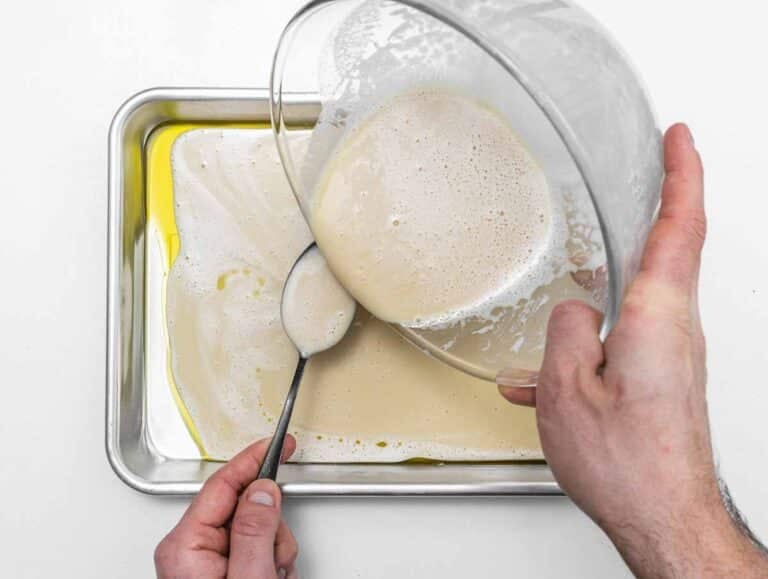
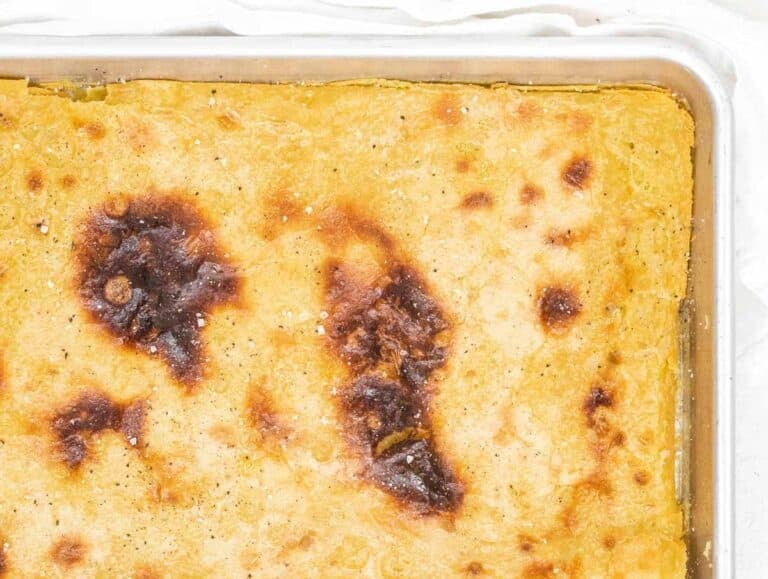
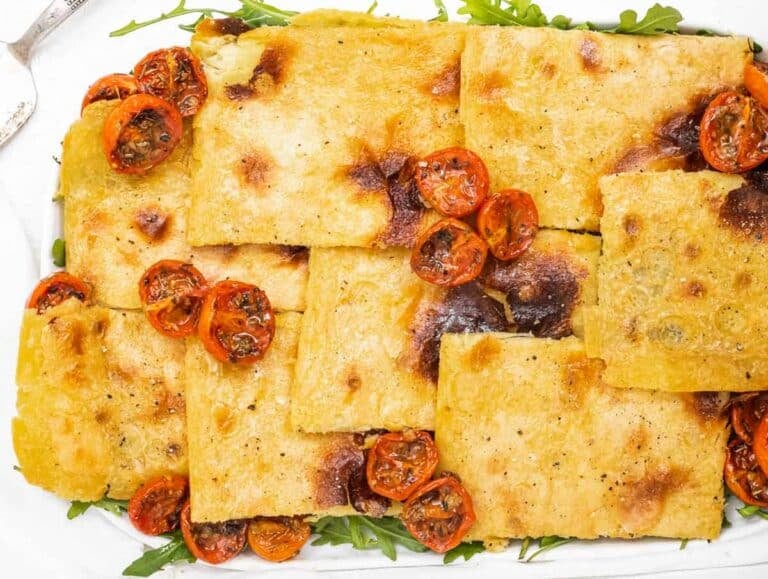
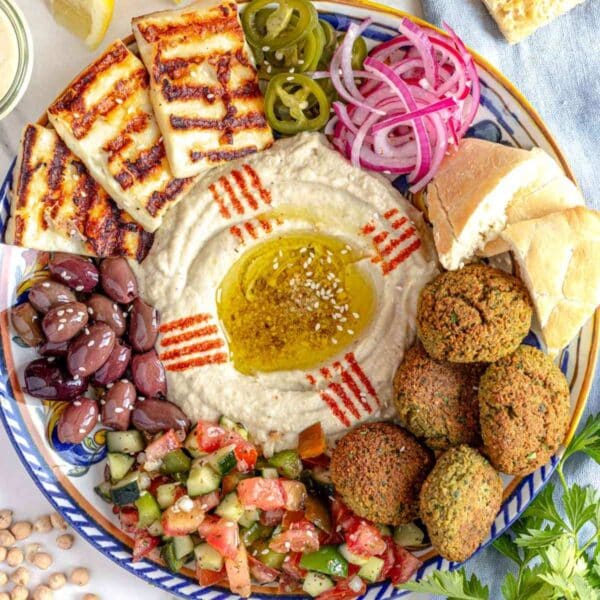
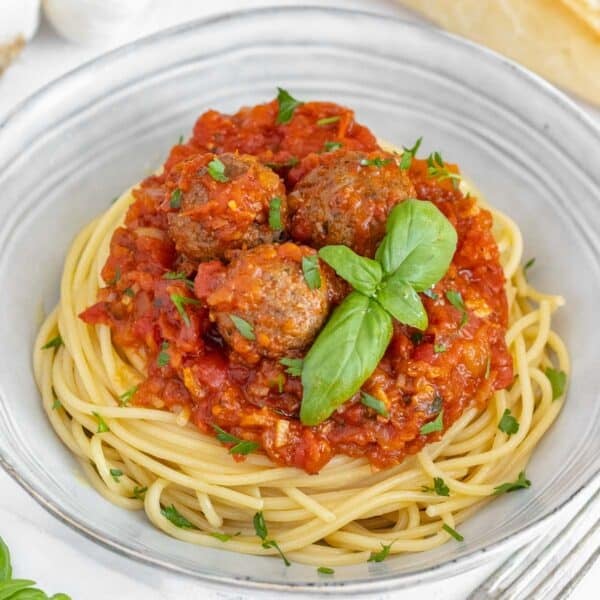
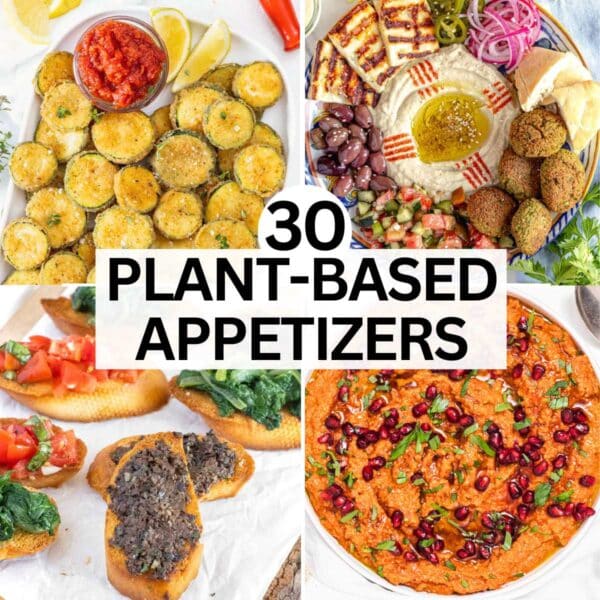
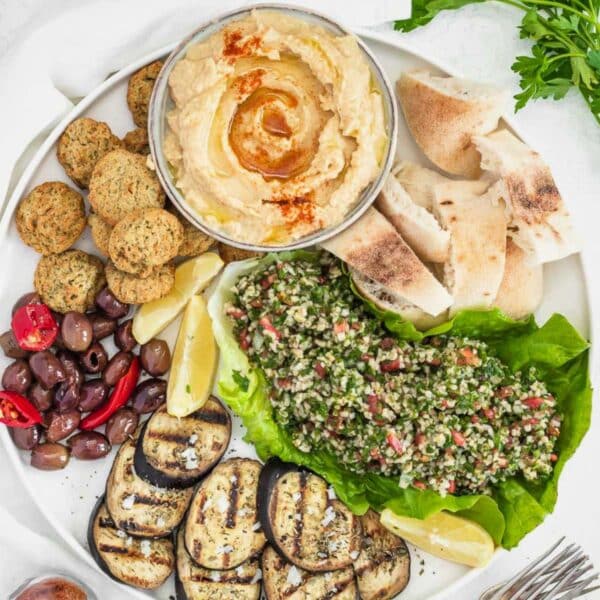

Hi.. checking if this chickpea faranita recipe can be made using butter instead of olive oil? If yes, how much butter to use? Thank you.
Hi Evelyn,
Yes, you can use butter instead of olive oil if you’d like! Just melt it first, and use the same amount — about 3 tablespoons should work well. It will give a slightly richer flavor. Let me know how it turns out!
Kindest,
Louise
Thank you Louise 🙂
I’d like to make this with the parchment paper….do you recommend adding all 3 tbsp of oil to the batter in that case?
Hi Elizabeth,
Good question! Since the oil enhances the flavors of the farinata, it’s best to add 2-3tbsp of oil to the batter 🙂
Happy cooking 💪
Tried this recipe and it was fantastic. Much less complicated than other faranita recipes I tried and just as good if not better. Will definitely make it again but with toppings next time.
Fantastic, Sandy!! Oh, I’m very excited to hear that you will try the toppings, it’s so good with tapenade, pesto, sun-dried tomatoes, sautèed zucchini, and more ☺️
Just made this tonight. One of the yummiest recipes I’ve ever made. While it was in the oven I sliced some onions and tomatoes and put them on about halfway through the baking. Then I chopped up some sun-dried tomatoes, sliced up some hot peppers and set aside a heap of capers as optional toppings. My family really enjoyed it. The more creative you can be with the topping the better. Think Mediteranean.
That sounds like a wonderful meal, Binyamin. Delicious serving suggestions 🎉
Thank you for your comment and for your rating. Kindest,
Louise
Oh my. Made the caponata from this site along with the farinata. They were so good. The farinata was such a surprise. It is over the top delicious and yet so simple. It is gold! Thank you so much.
Hi Jen,
Thanks so much for your comment, I’m super happy you loved the farinata. What a glorious combination next to the eggplant caponata – that’s our favorite way of serving it!
Have a great rest of your weekend,
Kindest, Louise
Caponata was one of my very favorite dishes that my Sicilian grandmother made. Thank you for putting the recipe out there it is a truly delicious food
It’s my pleasure, Elyse! Thanks so much for your support! Cheers, Nico